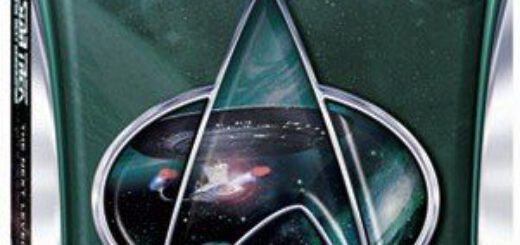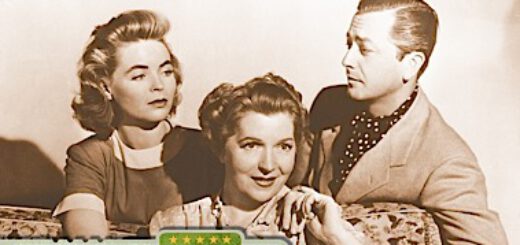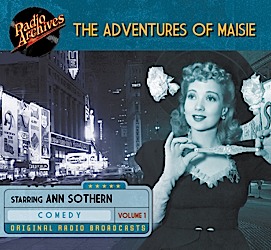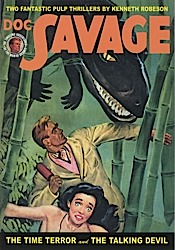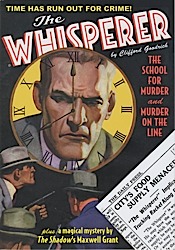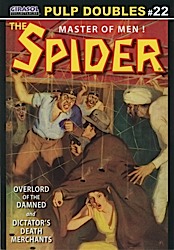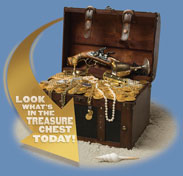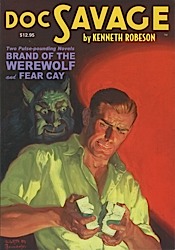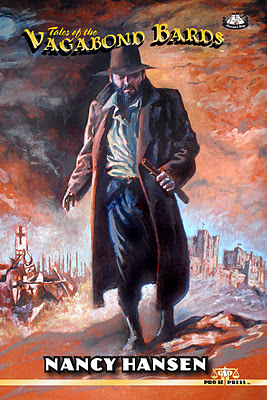Monthly Archive: January 2012
Star Trek: The Next Generation – The Next Level
 Star Trek: The Next Generation had to do a lot to convince fans of Gene Roddenberry’s trendsetting original series that it was the same vision, merely updated. By then, there had been two decades of just Kirk, Spock, McCoy and the crew of the U.S.S. Enterprise. The fans felt a certain ownership having saved it from cancellation during the original network run and then created an unprecedented following that led to an animated series and four feature films. The notion of continuing the series and setting it 78 years in the future left people wary.
Star Trek: The Next Generation had to do a lot to convince fans of Gene Roddenberry’s trendsetting original series that it was the same vision, merely updated. By then, there had been two decades of just Kirk, Spock, McCoy and the crew of the U.S.S. Enterprise. The fans felt a certain ownership having saved it from cancellation during the original network run and then created an unprecedented following that led to an animated series and four feature films. The notion of continuing the series and setting it 78 years in the future left people wary.
The turmoil surrounding the birth of Star Trek: The Next Generation and the haphazard production of the first season had fans even more concerned before the new show debuted in late September 1987. In those early Internet days, word still spread at warp speed as familiar names David Gerrold and D.C. Fontana joined and left staff while other producers and writers seemed to be named with startling regularity.
 The show survived a very shaky first year and matured into another trendsetting series that paved the way for tons of syndicated fare and showed that the Star Trek brand could be extended. And now, the second series has to prove itself all over again. The special effects for the seven seasons were produced using video production techniques, making it difficult to upgrade to Blu-ray. But not impossible.
The show survived a very shaky first year and matured into another trendsetting series that paved the way for tons of syndicated fare and showed that the Star Trek brand could be extended. And now, the second series has to prove itself all over again. The special effects for the seven seasons were produced using video production techniques, making it difficult to upgrade to Blu-ray. But not impossible.
Last September, CBS Home Entertainment announced they had solved the technical dilemma in a cost effective away, allowing them to remaster the entire series for Blu-ray release, with season one due later in 2012. Recently, we posted a video to show how the work was done, comparing scenes from the original video to the Blu-ray and it looked pretty amazing. The question then became, could this be sustained for entire episodes. (more…)
JOHN OSTRANDER: Ch-ch-choices
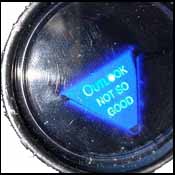 “To be or not to be, that is the question.” So goes one of the most quoted lines in Shakespeare, probably in all of literature. It’s so well known that it’s become a cliché; people who know almost nothing of Shakespeare know that phrase. Most of the times when I’ve seen it acted, the actor playing the character who speaks it, Hamlet, makes it an intellectual question, maybe something for philosophy.
“To be or not to be, that is the question.” So goes one of the most quoted lines in Shakespeare, probably in all of literature. It’s so well known that it’s become a cliché; people who know almost nothing of Shakespeare know that phrase. Most of the times when I’ve seen it acted, the actor playing the character who speaks it, Hamlet, makes it an intellectual question, maybe something for philosophy.
Except that it isn’t.
In context of the play, Prince Hamlet is contemplating suicide and every moment of that speech should be about whether or not Hamlet will choose to end his life – right then and there. If I was staging it, I’d have Hamlet with a sharp knife, playing with his wrist, maybe cutting himself, while he debates his choice.
It is the choices made and not made that drive the play – or should. And they drive story in general as well. How will a character act in a given situation? Even to choose not to act, not to make a decision, is in itself a choice.
In one of my favorite films, Casablanca, the female lead (Ingrid Bergman at her loveliest) confronts ex-lover Rick (Humphrey Bogart at his manliest) over letters-of-transit that will enable her and her heroic husband, Victor (Paul Heinreid at his Paul Heinreidiest), escape from Nazi-controlled Casablanca. Rick has refused so far to surrender the letters-of-transit because of lingering resentment at having been ditched by Ilsa. Problem is, she still loves Rick so she won’t shoot him to get the documents. She falls into his arms and tells him that she can’t choose, that he will have to choose for her, for all of them.
Rick holds her and then simply says, “All right. I will.” From that point, the movie rockets towards its fabled conclusion. Rick has been essentially choosing not to act up until this point. He now makes choices that will resolve all their fates.
Every story is full of choices that the characters make. They’re not always good choices; in fact, it’s often bad choices that make for a more interesting story. There are big choices, there are small choices, there are choices made for all kinds of reasons – and all that reveals character.
Think of your own life. What is more important? What a person says or what a person does? It’s what they do and that reflects choice and that reveals character. What a person says is also a choice and an act – they defend, they deny, they explain, they confront, they rationalize and so on. We all like to think we would know how we would react in a crisis situation but the truth is we don’t. We only know how we think we would act. You don’t know until you’re actually in the moment. That’s when you learn who you really are. That’s when we learn who a character really is. That’s the story.
This is a big year for story. The national political scene is one huge story. Choices are made constantly. Who do you choose to trust, who do you choose to believe, who will you choose to elect? Each choice is an act and each act tells us something about the character/person making that choice – in this case, ourselves and our country.
Each choice has consequences for the character or the person – good, bad, or indifferent. They link together, these choices made or not made, and they determine how the story comes out, what the destiny is. It’s true in fiction because it’s true in real life.
Choice defines our humanity and our freedom. Where there is no choice, there is no freedom. It doesn’t make it easy but it sure makes for a better story – whether we read it or live it.
MONDAY: Mindy Newell
MARC ALAN FISHMAN: Trades vs. Monthlies – An Unpopular Stance
 It seems when I write pieces here on ComicMix that are good-natured and optimistic, no one cares. When I get hot and bothered (and make sweeping declarations that demand debate), you get excited. So, you want riled up? You got it!
It seems when I write pieces here on ComicMix that are good-natured and optimistic, no one cares. When I get hot and bothered (and make sweeping declarations that demand debate), you get excited. So, you want riled up? You got it!
I think the comic book industry as a whole would be better off if it went digital for all monthly titles, and only printed graphic novels.
Settle down, settle down. You’ll have a chance to put me in my place in the comment section. Or you can skip my argument completely, and just go down to the bottom of the page, and start the flame war. Either way, my ego gets fed.
Let’s face it. Making a comic book every month isn’t easy. If it was, Justice League wouldn’t be two weeks late. But wasn’t there a big hard-and-fast rule in place stating no book would be delivered late, lest the creative team be removed for one that could keep up? Well I guess that only applies to talent who don’t exclusively work for the parent company, and have “Chief” on their business cards. But I digress.
Most comic books these days are “written for the trade.” Almost every cape on the racks today get four to six issues of a singular plot-line that crescendos into a final epic conclusion. Then, if we’re lucky, a one-shot to settle things down to the status quo. And the cycle repeats. In the case of other books (Matt Fraction’s Invincible Iron Man comes to mind) these arcs could last up to a year or even longer. This means that every month you get a bite of the candy bar. Wouldn’t it be nice to just eat the whole damned thing all at once? In an medium where the end product is sum of many parts, having all those parts only stands to make the whole piece better.
Brian Michael Bendis may physically have a disease preventing him from writing a book that isn’t deconstructed. And frankly, who disagrees that he works best in the bigger picture? I won’t ever buy singular issues of Ultimate Spider-Man. It’s too good in trade. The same goes for many other books I happen to get (or borrow with frequency); Invincible, The Sandman, Astro City, Y: The Last Man, Ex Machina, Fables… need I go on? In all of those cases, and so many more, collecting a book into a longer format makes for a more enjoyable experience. And when a trade it released, there is no waiting for that next chapter. I know there’s a massive caveat to that one folks, but I think the point is clear enough.
But Marc, you plea… If the industry went straight-to-trade, comic book shops would simply close up and die. Because right now, most comic book stores I know are so swamped with business they don’t even carry trades. Or action figures. Or magic cards. Or D+D. Or host local bands. Or have organized book clubs. The fact is, store owners lose more money stocking their shelves with every monthly book that comes out, and subsequently not sell them, then do they on carrying trades. One store in particular, Challengers Comics + Conversations in Chicago, told Unshaven Comics that they would only carry our book when it became a trade.
When I was told this by the very cool owner, my eyebrow raised. “We do far more business in trades than we do in monthlies man, sorry.” They even have a “Library” subscription where so many dollars a month guarantees you access to shelves of trades to “check out.” If I were a commuter and lived anywhere near the store, I’d be on that like Michael Davis on an Asian GoGo Dancer. My point being that brick and mortar stores could augment their current offerings and not lose their leases.
Monthly books allow fans to “sample” a title before committing to it. And those who follow along with my reviews (over on Michael Davis World, plug plug plug) know that recently I’ve committed to a “two bad issues in a row means I drop the title” policy. Thus far, that means I’ve dropped JLI, Red Lanterns, Green Lanterns: New Guardians, The Fury of Firestorm, and Irredeemable. If my dream came true, wouldn’t that mean I would stand to lose more money buying a multi-issue trade for a series I’d be unhappy with? I’m willing to eat crow on that one. To a point. You see, in the cases of all those books I listed, they all suffered from the same problems.
Predictable plots hampered by a repetitious narrative structure, or incoherent direction on the whole. As an example, Fury of Firestorm(s?) issue to issue took the same plot point (Danger! Transformation! Hitting!) and regurgitated it three times in a row. Through the fatigue, it becomes clear; the entire first arc takes place over one or two nights. Read as a whole though, the pacing wouldn’t be as troublesome to me. And in the case of JLI, where the plot was as by-the-books as you could get… I would contest that taken in 1 large chunk, it’s far easier to enjoy the staple “assemble the team and fight the giant evil” plotline when it’s not broken up into six parts. Especially when it fights for my attention with better-written monthlies like Batman, Action Comics, or Fantastic Four.
It’s a big argument, one that I hypocritically don’t even support on the other side of the aisle. Unshaven Comics made the decision to release issues in lieu of trades. But that, as Alton Brown would say, is for another show. I’d like to think I’ve given you enough to mull over. So, go ahead my bubbalas. Talk amongst yourselves. I’m getting a little verklempt. Trades vs. Monthlies… Discuss!
SUNDAY: John Ostrander
First Issue, Special: Announcing Bennett Reed Fishman
We would like to present Bennett Reed Fishman, scion of Marc Alan Fishman and Kathy Keller Fishman, weighing 7 lbs. and measuring 20″, and heir to the Emerald Throne of Lashanitogoo if he passes the trials– but no pressure.
Mom did absolutely amazing. Dad is no crazier than usual.
Congratulations to the entire family!
Related articles
- MARC ALAN FISHMAN: Make Mine Valiant (comicmix.com)
The Point Radio: The Curtain Falls On CHUCK
 It’s all over for CHUCK, but we linger backstage a bit longer for more reaction from the cast on the finale of the NBC Series plus FERRIS BUELLER Returns and HeroClix goes to the movies.
It’s all over for CHUCK, but we linger backstage a bit longer for more reaction from the cast on the finale of the NBC Series plus FERRIS BUELLER Returns and HeroClix goes to the movies.
The Point Radio is on the air right now – 24 hours a day of pop culture fun for FREE. GO HERE and LISTEN FREE on any computer or mobile device– and please check us out on Facebook right here & toss us a “like” or follow us on Twitter @ThePointRadio.
THE SPIDER GOES EBOOK! ALL OF ALTUS NOW AVAILABLE! DRAMA AND THE GREEN LAMA AND MORE!


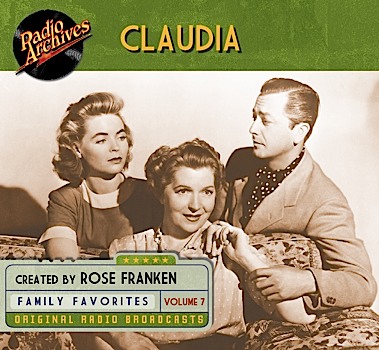
“Claudia” told the tale of Claudia and David Naughton, newlyweds, just beginning their married life. Young, enthusiastic, and very much in love, they weren’t suffering from any medical maladies or suspicions of infidelity. Instead, they were simply facing the many challenges of any new marriage – finding an apartment, getting used to each other’s quirks, and learning to live together on a daily basis. Claudia, a bit younger than her years, is often impulsive, sometimes irresponsible, usually perky, and just a bit flighty. As she matures, she becomes a unique mixture of enthusiasm, incompetence and over-confidence — deeply in love with her somewhat older husband David but frequently naive and too likely to trust her insecurities rather than her instincts.
Heard today, “Claudia” remains wonderful entertainment, notable for both its lighthearted tone and the believable interplay between its characters. In a feat that is rare where old time radio is concerned, Radio Archives has been able to locate and preserve the entire eighteen-month run of “Claudia” – 390 episodes in all – with no missing shows, allowing you to enjoy the complete series on a day-by-day basis. This collection offers 24 episodes of “Claudia” and marks the midway point of the remaining volumes. Claudia, Volume 7 and the series as a whole are a real treasure for radio enthusiasts to enjoy for many years to come and are available today from Radio Archives! Six hours on Audio CDs for $17.98.
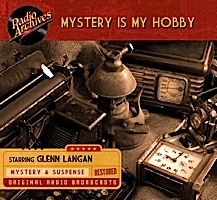

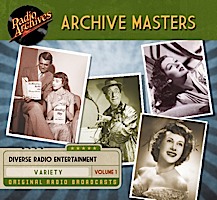
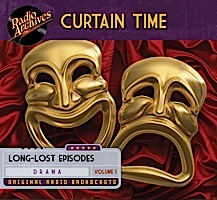
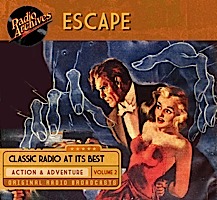
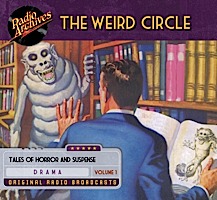

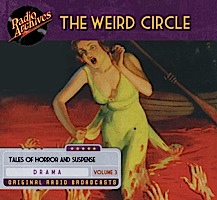
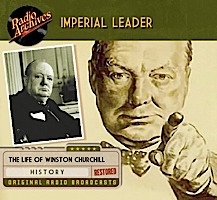
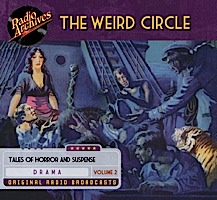
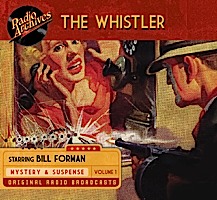

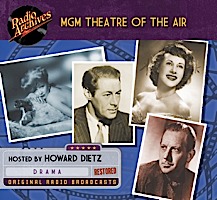
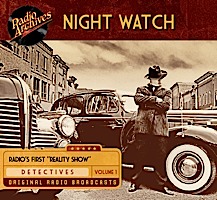
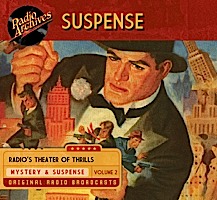

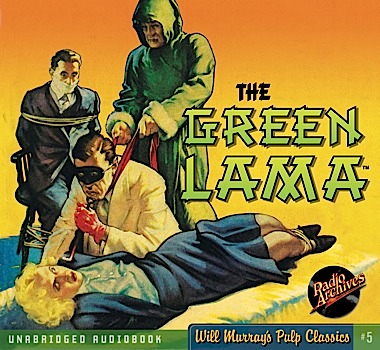
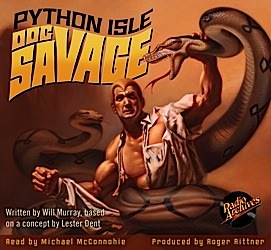



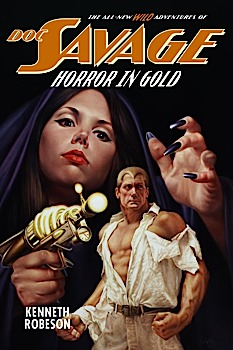
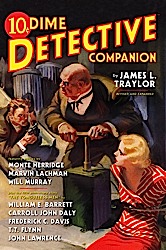
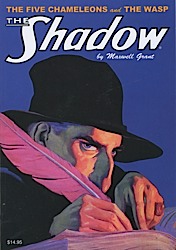
 Review of “Brand of the Werewolf” from Doc Savage, Volume 13
Review of “Brand of the Werewolf” from Doc Savage, Volume 13
Real Steel’s Hugh Jackman Talks Boxing Bots
 Hugh Jackman stars in Real Steel, out on home video this week, and the native Australian is best known to ComicMix fans for his work as Wolverine in X-Men, X2 and X-Men: The Last Stand before spinning off into X-Men Origins: Wolverine and cameoing as the canucklehead in X-Men First Class.
Hugh Jackman stars in Real Steel, out on home video this week, and the native Australian is best known to ComicMix fans for his work as Wolverine in X-Men, X2 and X-Men: The Last Stand before spinning off into X-Men Origins: Wolverine and cameoing as the canucklehead in X-Men First Class.
In the fall of 2009, Jackman made a return to Broadway in the Keith Huff-penned A Steady Rain.
On February 22, 2009, Jackman took on the prestigious role of hosting the 81st Annual Academy Awards live from the Kodak Theater, he wowed those in attendance and helped ABC score a 13% increase in viewership from the previous year. Previously, Jackman served as host of the Tony Awards three years in a row, from 2003-2005, earning an Emmy Award for his 2004 duties at the 58th annual ceremony and a nomination for his 2005 appearance at the 59th annual ceremony.
In 2008, Jackman was seen in Twentieth Century Fox’s Deception opposite Ewan McGregor and the romantic action-adventure epic Australia, directed by Baz Luhrmann.
Jackman has also starred in Darren Aronofsky’s The Fountain, Christopher Nolan’s The Prestige and Woody Allen’s Scoop. He has lent his voice to the animated features Happy Feet and Flushed Away. Other films in which he has had leading roles include Someone Like You, Swordfish, Van Helsing and Kate and Leopold, for which he received a 2002 Golden Globe nomination.
For his portrayal of the 1970s singer-songwriter Peter Allen in The Boy From Oz, Jackman received the 2004 Tony Award® for Best Actor in a musical as well as Drama Desk, Drama League, Outer Critics Circle and Theatre World awards.
Previous theater credits include Carousel at Carnegie Hall, Oklahoma! at the National Theater in London (Olivier Award nomination), “Sunset Boulevard” (for which he won a Mo Award, Australia’s Tony Award) and Disney’s Beauty and the Beast (Mo Award nomination). (more…)
ALL PULP INTERVIEWS PULP FANTASY AUTHOR NANCY HANSEN ON LATEST BOOK AND IMPRINT!
AP: You’re fairly a newcomer to Pulp. What about Pulp appeals to you, a fantasy writer.
AP: What are your future plans for the Bards?
AP: If you had to point out one thing about your writing that you hope readers take away from reading one of your books, what would that be?
MARTHA THOMASES: Copyrights … and Copywrongs
Last week, ComicMix, along with most of the Internet, protested against SOPA and PIPA, two bills that would have seriously compromised our ability to use the web to share information … and gossip … and pictures of cats.
The protests were so widespread that Congress backed down and sent the bills back to committee. It was a victory for those of us who spend all day enthralled by our computer screens, and, more important, it was a victory for the free exchange of ideas.
Still, I can understand the motivation behind the bill, despite how crudely and ham-handedly it was written. The purpose was to protect intellectual property. As a writer, I enjoy getting paid for my work. It would make me grumpy if someone else made money from my efforts and didn’t include me in the payday.
If anything, this hubbub shines a light on our wonky and unfair copyright laws. The purpose of copyright is not only to protect the rights of creators, but also to encourage creativity in a capitalist system. If my writing can make me money, I’ll be encouraged to write more. The same is true for songwriters, artists, choreographers, filmmakers, and comic book crews.
Unfortunately, our particular version of the capitalist system doesn’t work that way.
Songwriters, for example, collect royalties from those who record (and then sell) their songs. In many, many cases, they are not able to get their work published without giving away a large percentage (usually as a co-writing credit) to the publisher. As a result, a lot of musicians don’t care if their work gets downloaded illegally, because it increases their audience and they can make more money – which they don’t have to share – on tour.
On a larger scale, this is true in movies and television. We’ve all heard the stories about actors, directors or screenwriters who supposedly have profit participation in their films, but the studios claim there are no profits.
In comics, at least in so-called mainstream comics, the price for a chance to work for a company that would distribute your creation was your copyright. The most famous example is Siegel and Shuster’s Superman. Things have improved, and if you work for Marvel or DC as a creator, you can now get health insurance and a contract (so you can get a mortgage), but you will still most likely have to agree to work for hire.
The major media corporations try to defend their anti-piracy efforts by saying they are protecting creative people. If only. As Kyle Baker recently explained, the entertainment conglomerates treat creative people as interchangeable widgets. If one artist wants a living wage, ship the job overseas.
[youtube]http://www.youtube.com/watch?v=1zJVnmpYR7U[/youtube]
The Internet should make it easier for artists to communicate directly with their audiences, without paying the toll of working for a Disney or a Murdoch. It should level the playing field for all entrants.
It should also reduce the price of an admission ticket. Just ask Louis CK.
SATURDAY: Marc Alan Fishman


